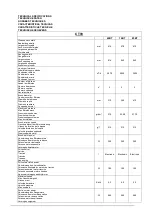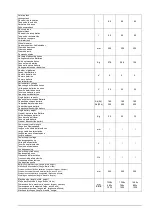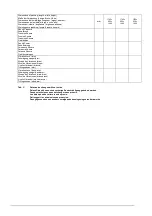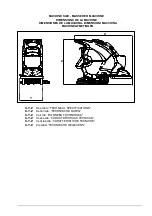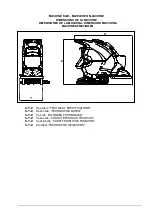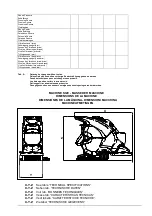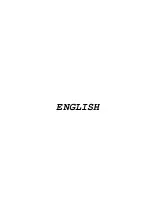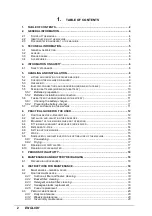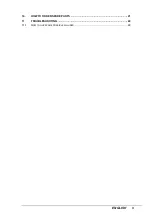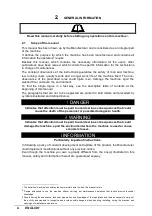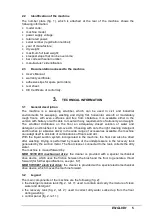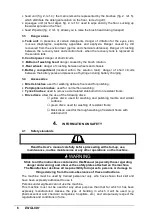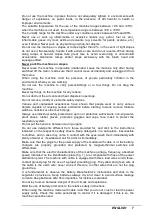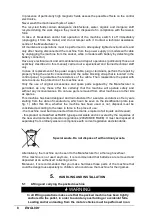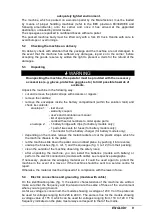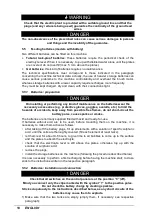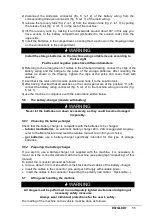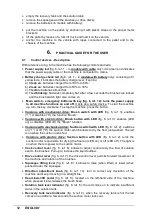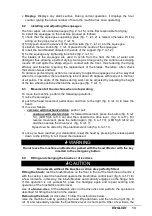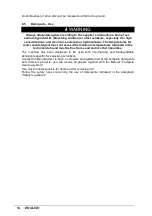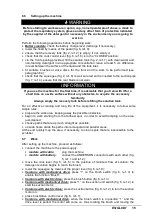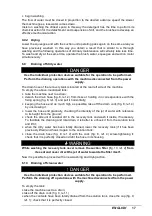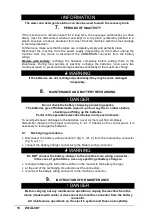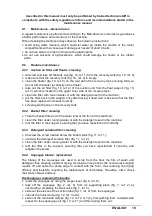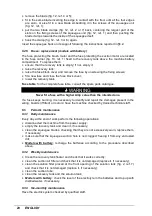
ENGLISH
5
2.2
Identification of the machine
The number plate (fig. 1), which is attached at the rear of the machine, shows the
following information:
•
model code;
•
machine model;
•
power supply voltage;
•
total rated power;
•
serial number (registration number);
•
year of manufacture;
•
dry weight;
•
maximum full load weight;
•
steepest slope that can be overcome;
•
bar code with serial number;
•
manufacturer’s identification.
2.3
Documentation annexed to the machine
•
User's Manual;
•
warranty certificate;
•
adhesive slips for spare part orders;
•
test sheet;
•
CE Certificate of conformity.
3.
TECHNICAL INFORMATION
3.1
General description
The machine is a sweeping scrubber, which can be used in civil and industrial
environments for sweeping, washing and drying flat, horizontal, smooth or moderately
rough floors, with even surfaces and free from obstacles. It is available either in the
version with battery or with cable to meet with any requirements of autonomy and weight.
The scrubber distributes on the floor an adequately dosed solution of water and
detergent, and brushes it to remove dirt. Choosing with care the right cleaning detergent
and brushes (or abrasive discs) in the wide range of accessories available, the machine
can adapt itself to all kinds of combinations of floors and dirt.
With the liquid suction system incorporated in the machine, the floor can also be dried
after washing. Drying is performed by means of the underpressure in the recovery tank
generated by the suction motor. The floor cleaner, connected to the tank, collects the dirty
water.
The machine is moved forward by:
MOD 50/55 B/C mechanical drive: the cleaner is provided with a special mechanical
drive device, which uses the friction between the brush and the floor to generate a thrust
forward (for further specifications, see par. 6.7).
MOD 50/55 BT electrical drive: the cleaner is provided with a special electromechanical
drive device, which moves the machine forward.
3.2
Legend
The main components of the machine are the following (fig. 2):
•
the detergent solution tank (fig. 2, ref. 7): used to contain and carry the mixture of clean
water and detergent;
•
the recovery tank (fig. 2, ref. 2): used to collect dirty water sucked up from the floor
during washing;
•
control panel (fig. 2, ref. 1);


